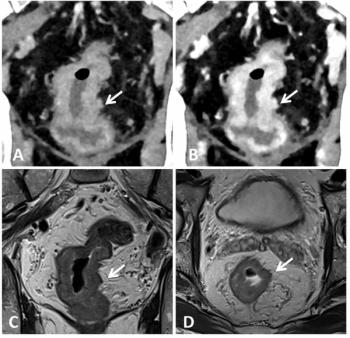
Cardiac MRI Shows Heart Struggles During Free Diving
CHICAGO-MRI shows significant changes to the heart of elite free divers.
Extreme divers who participate in free diving experience massive hemodynamic changes to the heart and increase of blood flow to the brain, according to a study presented at the annual meeting of the Radiological Society of North America (RSNA).
Researchers from Germany used comprehensive cardiac MRI (CMRI) to investigate the effects of prolonged apnea to the heart and hemodynamic alterations.
Seventeen divers participated in the study, 15 males and 2 females. They underwent CMRI before, during, and after maximum breath hold in two sessions. The first CMRI was to evaluate cardiac function (left ventricular end-diastolic volume [LV-EDV], end-systolic function [LV-ESV], ejection fraction [LV-EF], and fractional shortening [FS]). The second measured both common carotid arteries (ACC).
"We wanted to look at the changes that occur in the heart during apnea in real time," coauthor Jonas Dörner, MD, said in a release.
The results showed that the average apnea period was 299 seconds in the first session and 279 seconds in the second. The maximum apneic period during the exams was eight minutes and three seconds.
Over time, the apneic period resulted in significant changes:
"At the beginning of the apnea period, the heart pumped more strongly than when the heart was at rest," Dörner said in the release. "Over time, the heart dilated and began to struggle." By the end of the apnea period, Dörner said the divers' heart function began to fail. However, the divers’ heart function returned to normal within minutes of resumption of breathing.
While elite divers may quickly recover, the concern is for those who do such dives but without the same level of training. "As a recreational activity, free diving could be harmful for someone who has heart or other medical conditions and is not well trained for the activity," study leader, Lars Eichhorn, MD, said in the release. [[{"type":"media","view_mode":"media_crop","fid":"43723","attributes":{"alt":"","class":"media-image media-image-right","id":"media_crop_6608182281742","media_crop_h":"0","media_crop_image_style":"-1","media_crop_instance":"4821","media_crop_rotate":"0","media_crop_scale_h":"0","media_crop_scale_w":"0","media_crop_w":"0","media_crop_x":"0","media_crop_y":"0","style":"height: 356px; width: 400px; float: right;","title":" Cardiac MRI showing normal left ventricular function in the standard horizontal long axis (upper two images) and with corresponding short axis (lower two images) in diastole-the period during which the ventricles are filling and relaxing (left)-and systole-the phase of the heartbeat when the heart muscle contracts and pumps blood from the chambers into the arteries (right)-at the mid ventricular section of the heart (white line). ©RSNA 2015.","typeof":"foaf:Image"}}]]
Newsletter
Stay at the forefront of radiology with the Diagnostic Imaging newsletter, delivering the latest news, clinical insights, and imaging advancements for today’s radiologists.



























